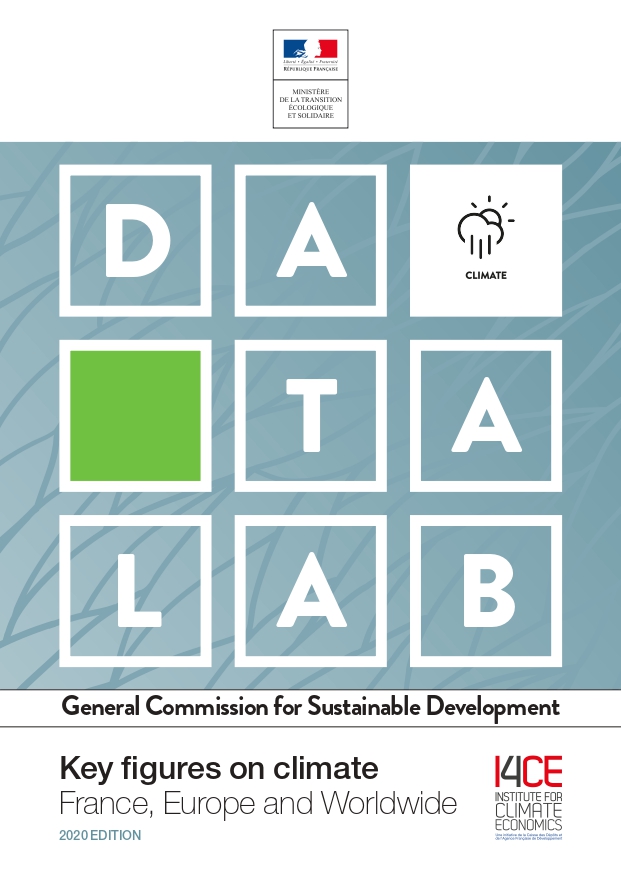Key Figures on Climate – France, Europe, Worldwide
On the opening of the 25th Conference of the Parties on Climate Change (COP 25) which is held in Madrid from 2 to 13 December 2019, I4CE-Institute for Climate Economics and the French Ministry of the Ecological and Inclusive Transition are pleased to present the 2020 edition of Key Figures on climate – France, Europe, Worlwide.
This small-format publication summarizes the basics to better understand climate change challenges. Figures and graphs illustrate its causes and impacts, as well as mitigation measures. In particular, detailed statistics are provided on greenhouse gas emissions and on observed trends in the world, in Europe and in France. This publication has been produced for both the general public and the expert who needs a summary close to hand.
Some key figures from the 2020 edition:
- Global CO2 emissions increased by + 64% between 1990 and 2017. They account for three-quarters of global greenhouse gas emissions linked to human activities, which totalled the equivalent of 53.5 GtCO2e in 2017.
- These emissions cause the warming of the global annual mean temperature: the latter has increased by +1°C relative to the 1850-1900 reference period.
- In 2017, China remained the highest CO2 emitting country in the world (29.3%), ahead of the United States (13.8%), the European Union (9.6%) and India (6.6%).
- In 2017, European Union GHG emissions, without Land-use, Land-Use change and Forestry (LULUCF), increased by -0.5% compared to 2016 and over the longer term decreased by +23% from 1990.
- The price of allowances of the European Emissions Trading Scheme (EU-ETS) has increased since 2018. In the first six months of 2019, it has fluctuated between € 20 and € 30/tCO2e.
- In 2017, France GHG emissions, without Land-use, Land-Use change and Forestry (LULUCF), increased by -0.9% compared to 2016 and over the longer term decreased by +15% from 1990.
- The carbon footprint(1) of the French population increased by +20% between 1995 and 2018.
- In 2017, France invested 41.2 billion euros in favour of the climate.
1 The carbon footprint approach accounts for emissions from final domestic demand in the country. It includes emissions from imported goods in addition to direct emissions from households (housing and cars) and from domestic production (excluding exports). It accounts here the three main greenhouse gases: CO2, CH4, and N2O. It complements and differs from the more widely used territorial approach, which accounts for greenhouse gases physically emitted inside a country.

